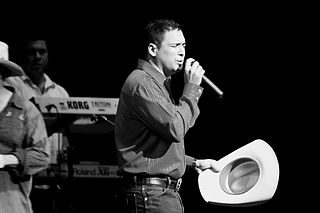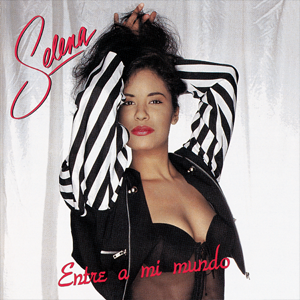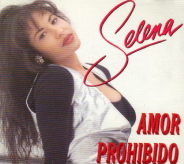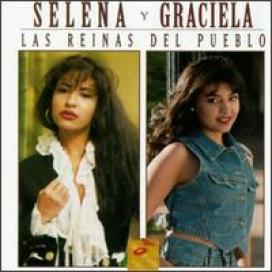Patsy Torres | |
|---|---|
| Born | 1957 (age 66–67) San Antonio, Texas, U.S. |
| Genres | |
| Occupation(s) | Singer |
| Instrument | Trumpet |
| Years active | 1980–present |
| Labels |
|
| Website | patsytorres |
Patricia Donita Torres (born 1957) is an American singer of Tejano music. Known for her vocal versatility, she has been referred to as the "princess of Tejano music" by The Monitor . [1] Torres began her musical career as a trumpet player for Blue Harmony. The band was discovered by Albert Esquivel in 1980, after which they released their debut album with production handled by Manny Guerra. In 1982, Torres formed the Patsy Torres Band and signed with Bob Grever's Cara Records. After obtaining a college degree in science, Torres decided to pursue a career as a pediatrician.
After indie label Freddie Records expressed interest in signing Torres and she had signed a three-year promotional contract with Budweiser, Torres decided to continue her musical career. Her ranchera single "Ya Me Voy de Esta Tierra", an original 1947 mariachi, became the first number-one single of her career which elevated Torres into a regional successful singer. Torres became the first female Tejano singer to provide audiences with dance routines and costume changes during her concerts. This led her to win the Tejano Music Award for Female Entertainer of the Year at the 1987 Tejano Music Awards. Torres was named by Billboard magazine as the top female Tejano singer of 1989.
Torres became an activist after her best friend died of a cocaine overdose in 1989. She campaigned in high schools across the United States, warning children of the dangers of doing drugs, affiliating with gangs, and teen pregnancy. In 1990, the singer signed with WEA Latina and became the leading female Tejano country music singer. Torres was the first Tejano singer to sing a bilingual song on The Nashville Network and was named as "one of the most impressive female Tejano artists"[ by whom? ] of her generation.[ citation needed ] During the height of Tejano music's popularity in 1994, Torres was considered a pioneer who helped expand the genre's prosperity. In 1996, Torres won the Songwriter Award at the BMI Latin Awards. The singer received doctorates in education and organizational leadership in 2011 at the University of Incarnate Word. She has been inducted into the Tejano Roots Hall of Fame and the Women's Hall of Fame in San Antonio. [2]
Patricia Donita Torres was born in San Antonio, Texas to Williado and Patricia Torres. [3] The family lived in a poor barrio of San Antonio. [4] Her role model was her grandfather, William Torres, whom she hoped to emulate by becoming a physician. Seeing her little sister — who played the saxophone — get out of class on various occasions because she was in the school band, she took up the trumpet. Torres joined the school's band as their trumpet player and then formed a group with her sister called Blue Harmony. {Wellington |2013 |p=26} She graduated from Thomas Jefferson High School She played the trumpet while someone else sang. [1] [5] Torres continued Blue Harmony with the hopes of raising enough money to attend college and become a pediatrician. [6] Though the members changed after graduation, the Blue Harmony band survived and started playing for money. But the trumpeter was told that the new keyboard the group had acquired made the horns obsolete and that she could stay only if she could sing. So she did. “And six months later I was discovered,” she says. “ We were performing at a wedding, and I sang just one song, the only one I knew, but this record producer who heard me didn't know that. He took us into the studio, and we won a recording contract.” {Wellington |2013 |p=26} The record producer was Albert Esquivel, who signed Blue Harmony in 1980. The group recorded their first album with production handled by Manny Guerra. Torres was also influenced by Laura Canales, who was instrumental in providing opportunities for women participation in Tejano music. The two eventually toured together and formed a bond, with Canales jokingly referring to Torres as the "Chicana Madonna" because of her costume designs.The single "Mi Casa Esta Vacia" provided Blue Harmony with moderate success. In 1982, the group disbanded and Torres formed the Patsy Torres Band. [1]
Torres signed with Bob Grever's Cara Records in San Antonio. [3] The 1984 single "Lowrider"/"Novela" helped establish Torres within the realm of Tejano music. She signed a three-year contract with Budwiser. [1] In 1986, Torres received her college degree in science and planned on quitting music in favor of practicing medicine. [6] After Freddie Records expressed interest in signing Torres to their label, she decided to stay recording music. [7] She subsequently released her second album La Nueva Voz (1985), which included the ranchera track "Ya Me Voy de Esta Tierra", a 1947 mariachi written by her grandfather. It provided Torres with her first number-one single, [3] becoming a regional success for the band. [1] The band included Joe Martinez on drums, Rick Ramirez on keyboards, and Brian "Red" Moore on bass guitar. During her concerts, Torres's setlist included the singer's Tejano recordings and covers of hard rock songs. Since the inception of the Tejano Music Awards in 1981, Torres has been nominated for Female Vocalist of the Year and Female Entertainer of the Year. [1] She attended San Antonio's inaugural New Year's Celebration in 1986. The singer produced her own music video for MTV and VH1, [8] and became the first Tejano artist to film a music video. [9] Known for her vocal versatility, she has been referred to as the "princess of Tejano music" by The Monitor . [1]
Torres utilized the entire stage and provided dance performances during her concerts, the first female Tejano performer to do so. Unlike her predecessors such as Canales, Lisa Lopez, and Elsa Garcia, Torres provided those in attendance with dance routines and costume changes throughout her performance. Torres was influenced by rock musicians Pat Benatar, Heart, and Chrissie Hynde and provided 1980s-style visual aesthetics to her performances. [3] This led her to win Female Entertainer of the Year at the 1987 Tejano Music Awards. [10] During this time, Tejano music entered its golden age, and Torres helped define the era along with Canales, Little Joe y la Familia, Mazz, La Mafia, Emilio Navaira, and Selena. [11] During the genre's golden age, Torres produced regional hits with her singles [12] In 1989, Torres's single "Enamorado" was the eighth most-played song in Chicago. [13] Billboard named Torres as the top female Tejano singer of 1989. [8] [14] She was named Female Vocalist of the Year at the first Tejano Vida magazine awards in Austin, Texas in 1989. [15] Torres performed at Air Force bases in the Pacific as part of a Defense Department tour in 1989. She performed in Hawaii, Japan, Korea, the Philippines, and Guam, as part of the tour. [16] The singer's single "Amor Con Amor" was the ninth most-played song on Tejano radio stations in Texas for two consecutive weeks, beginning on the week ending September 26, 1991. [17] [18]
Beginning in the early 1990s, Torres became an outspoken supporter of anti-drug abuse and stay-in-school campaigns. [19] [8] After her best friend overdosed on cocaine in 1989, she included in her message to children to be advocates for their friends and encouraged them to act, commenting: "I rather have an ex-friend than a dead friend." [20] The singer's Positive Force Tour campaigned in high schools across the United States. Torres tells children that her most significant accomplishment was getting a college education during her music career while maintaining her morals. [9] The Positive Force Tour included mini skits, participation, and dramatized scenarios of where gang membership, violence, teen pregnancy, and abusing drugs can lead children in life. [2] Torres spoke out against prejudices towards AIDS patients and spoke to students about the dangers of joining gangs. [21] In 1989, she headlined a concert at the Austin Opera House with Little Joe y la Familia that provided books and other school supplies for underprivileged students as part of the Teach the Children campaign. [22] She credits her family values that provided Torres with a "healthy attitude and strong faith" that enabled her to obtain her life goals. [8] The singer has inspired her fans to continue their education and has received gang-affiliated bandanas from those who quit being gang members due to Torres's influence. [21] An entertainment critic called her "not just another female singer", while another in The Waco Citizen called her "perky [and] vivacious". [23] Torres became the first Tejano singer to appear in three different national shows, including a television special at SeaWorld, International Star Search , and Nashville Now all in 1990. [16] That same year, Torres enrolled in University of the Incarnate Word, where she took up a communications arts degree. [24] In 1992, she toured in Germany, [21] Turkey, Italy, Greece, and Spain for a month and a half. [25]
In 1990, Torres signed with WEA Latina for a three-year contract. [14] Her debut album with them was titled Amor Con Amour Se Paga (1991). [8] By 1991, she was the leading female Tejano country singer. [8] Performed for upwards of 60,000 attendees, Torres is considered "one of the most important Tejano female singers" of her generation. [14] She performed on the Johnny Canales Show in 1991. [14] The singer also became the first Tejano artist to perform a bilingual country song on The Nashville Network. [14] Torres was featured on Vista magazine's "What's Hot in Texas" for 1991. [8] In 1992, she was named "one of the most impressive female Tejano artists" of her generation. [4] Torres is considered a "hero" and role model in her hometown of San Antonio during her advocacy. [4] In 1993, she released her sixth studio album Con Todo El Corazon, with a mixture of ballads, polkas, and cumbias. [26] Considered a pioneer in Tejano music, the singer helped the "Tejano wave" in 1994 with her "crowd-pleasing concerts". [27]
Following the shooting death of Selena on March 31, 1995, the Tejano music market suffered and its popularity waned. Radio stations in the US that played Tejano music switched to regional Mexican music, and by 1997, KQQK was the only radio station playing non-stop Tejano music. [28] The music video for "Te Juro" was released in December 1995 through Balboa Records, [20] while the song was chosen by the San Antonio Tourist Bureau as a representative of the "sounds of the city". [29] Torres was awarded as one of BMI's Songwriters at their Latin Awards in 1996. [30] In 1996, Torres signed with indie label Joey Records and released Bien Cuidada. [31] Latin Style magazine described her as "the sound of the future" in 1998. [32] Torres was named the Latin Woman in Action in the Arts by La Prensa de San Antonio and was inducted into the Women's Hall of Fame in San Antonio. [33] In October 2000, she became a spokesperson for the campaign "Get a Mammogram, Mi Amiga", sponsored by Sprint Corporation with the backing of the Susan G. Komen Foundation urging Hispanic women to get a mammogram during Breast Cancer Awareness Month. [34] In 2014, Torres received the Alumna of Distinction for Professional Achievement at the University of the Incarnate Word, where she received her doctorates in education and organizational leadership in 2011. She served as an honorary board member for the American Cancer Society, the Latin Girl Scouts of America, and San Antonio College. The singer also served as chairperson of the American Red Cross. [35]
Torres became the first female Tejano singer to have her compositions scored for an orchestra and perform with symphonies. Since 2014, Torres has been awarded the LULAC National Presidential Citation, Texas War on Drugs Leadership Award, the National Tejano Conference Community Award, the TAMACC Women of Distinction Award, and has been inducted into the Tejano Roots Hall of Fame. [35] At the 2015 Tejano Music Awards, Torres performed "Dreaming of You" as part of a tribute segment for Selena, saying: "I can't believe it's been 20 years since I lost my friend, but I know Selena still lives in her music, hearts and minds of her fans, and still inspires a whole new generation to continue to dream." [36] That same year, Torres received the Lifetime Achievement Award from the Mariachi Corazón "for her community work and dedication to the arts in San Antonio". [37] In 2021, Torres was invited to participate in Genyva's collaborative project featuring the women in Tejano music. Genyva decided to release a Latin Christian album, with the lead single "[bringing unity amongst women [in Tejano music]", showcasing the unity of the women in the genre. [38] In 2022, Torres released "Dedicada a Ti", a Spanish-language version of "Hopelessly Devoted to You" (1978) by Olivia Newton-John. Torres originally recorded the song for her Mi Inspiracion (2013), and decided to release the song as a single as a tribute to Newton-John following the announcement of her death. [39]
On April 19, 1988, [40] Torres married singer-songwriter David Lucero. [41] Her single "Te Juro" was written for Lucero in 1994; Torres wrote the song "to assure him that he was my one and only". [2] In 2014, Lucero was arrested during a prostitution sting conducted by the San Antonio Police Department. Lucero was charged with soliciting an undercover police officer for sex. Torres refused to comment on her husband's arrest when prompted. At the time, Lucero was the events services manager at the Alamodome in San Antonio. [40] Torres is a Catholic and released her Christian-themed album Saved at Last (2012) after a fundraiser for St. Mary's Catholic Church. She has said in an interview that she is proud to be part of "Tejanos for Christ". [2] The singer has belief in strong family values, which she believes strengthens any foundation. [9] Considered one of the instrumental musicians who helped spearhead Tejano music's golden age, Torres considers her activism with children as one of the best accomplishments of her life. [2]

José Roberto Pulido Jr., known professionally as Bobby Pulido, is an American singer, songwriter, guitarist, and actor. He is acclaimed for pioneering the dissemination of Tejano music to a youthful audience, subsequently ascending as a teen idol and becoming one of the most influential Tejano recording artists among Mexican-American teenagers.

Amor Prohibido is the fourth studio album by American singer Selena, released on March 22, 1994, by EMI Latin. Having reached a core fan base, the label aimed to broaden her appeal with the next studio release. Finding it challenging to write a follow-up hit after "Como la Flor" (1992), Selena's brother A. B. Quintanilla enlisted the assistance from band members Ricky Vela and Pete Astudillo with writing the album's songs. The resulting album has a more mature sound featuring experimental production that blends diverse musical styles from ranchera to hip-hop music. Amor Prohibido is a Tejano cumbia album modernized with a synthesizer-rich delivery using a minimalist style that was quintessential in early 1990s Tejano music.

Ven Conmigo is the second studio album by American singer Selena, released on November 12, 1990, by EMI Latin. The singer's brother, A.B. Quintanilla III remained her principal record producer and songwriter after her debut album's moderate success. Selena's Los Dinos band composed and arranged seven of the album's ten tracks; local songwriter Johnny Herrera also provided songs for Selena to record. Ven Conmigo contains half cumbias and half rancheras, though the album includes other genres. Its musical compositions are varied and demonstrate an evolving maturity in Selena's basic Tejano sound. The album's structure and track organization were unconventional compared with other Tejano music albums. The songs on Ven Conmigo are mostly love songs or songs following a woman's struggles after many failed relationships.

Entre a Mi Mundo is the third studio album by American singer Selena, released on May 6, 1992, by EMI Latin. The label endeavored to bolster Selena's popularity within the Latin music market in the United States with this release. Selena's brother, A. B. Quintanilla kept his role as the singer's producer and, in collaboration with Selena y Los Dinos members Pete Astudillo and Ricky Vela, composed tracks for the album. The ensuing recording encompassed an eclectic array of songs, attributable to the members' diverse backgrounds, which facilitated the modernization of the many genres they explored. Entre a Mi Mundo is a Tejano cumbia album that encapsulated Selena's quintessential sound, characterized by engaging tunes harmonized with her distinctive, plaintive vocals and a relaxed, danceable cumbia beat. The album incorporates musical inspirations from power pop, R&B, disco, rock, funk, and synthesized Tejano music.

Selena is the self-titled debut studio album by American Tejano singer Selena, released on October 17, 1989, by EMI Latin. Its music incorporates a range of contemporary genres with a mix of cumbia and regional styles of Mexican music. The album was released following company president Jose Behar's failed crossover request for the singer. The project was denied by the heads of EMI Records' pop division, believing the singer should first strengthen her fanbase. Selena's brother and principal record producer and songwriter, A.B. Quintanilla III fought to remain the singer's producer. The band introduced Pete Astudillo and Joe Ojeda, who contributed to the album's experimental production and songwriting. Aside from A.B., Selena worked with two Mexican songwriters, Alejandro Montealegre and Reinaldo Ornelas.

Mis Mejores Canciones – 17 Super Éxitos is a greatest hits album by American singer Selena released on September 17, 1993, through EMI Latin. Beginning in January 1993, the label released a comprehensive collection that spotlighted its Latin music artists as part of its Latin Classics series. Mis Mejores Canciones – 17 Super Exitos encompasses 17 tracks, ranging from songs recorded on her debut album with EMI Latin, to songs present in Entre a Mi Mundo (1992). The album received a positive response from music critics who enjoyed the label's catalog releases and praised the tracks on the album for showcasing Selena's early popular recordings. Following the shooting death of Selena on March 31, 1995, Mis Mejores Canciones – 17 Super Exitos debuted at number one on the US Billboard Top Catalog Albums chart, the first Spanish-language recording to do so. The Recording Industry Association of America (RIAA) certified the album diamond (Latin), denoting 600,000 units shipped in the United States.

All My Hits: Todos Mis Éxitos Vol. 2 is a greatest hits album by American singer Selena that was released on February 29, 2000, through EMI Latin. After Selena's murder in 1995, her father Abraham Quintanilla stated his commitment to preserving her music and EMI Latin pledged ongoing support for her releases. In 1999, the label's president José Behar acknowledged Selena, who remained the label's top-selling artist, for her contributions to establishing EMI Latin as "the house that Selena built". In March 1999, to commemorate the label's tenth anniversary, it released All My Hits: Todos Mis Éxitos; it achieved commercial success and a sequel was announced. All My Hits: Todos Mis Éxitos Vol. 2 contains 16 songs ranging from tracks featured on Selena's Muñequito de Trapo (1987) to the posthumous 1997 club remix of "Enamorada de Ti" (1990).

Pedro Astudillo, known as Pete Astudillo, is an American singer-songwriter, record producer, and dancer. Referred to as "the Latino Babyface" by The Daily Journal, he is regarded as the architect behind Selena's sound, as he collaborated or coauthored the singer's top-selling and most popular recordings that cemented him into music history. Astudillo wrote or collaborated on some of the most popular Tejano music songs of the 1990s and was inducted into the Tejano Roots Hall of Fame in 2019. His impact on the United States Latin music scene lies in his role as a songwriter collaborator, according to Billboard magazine.

"Amor Prohibido" is the title song of American Tejano singer Selena's fourth studio album of the same name (1994). Released as the lead single through EMI Latin on April 13, 1994, it was written by Selena, her brother and music producer A.B. Quintanilla III, and her band's backup vocalist Pete Astudillo. A popular interpretation compares it to Romeo and Juliet.
Gary Lee Hobbs is an American singer-songwriter, record producer, and actor. Called "Tejano music's Vince Gill", he has been widely recognized for his resonant baritone vocals, characterized by their emotive quality, and is considered a pioneer within the genre. Hobbs played a significant role in the expansion of Tejano music during the 1990s and became one of the most popular Tejano singers of the 1980s and 1990s.

Las Reinas del Pueblo is a compilation album by American Tejano music singer Selena and Mexican banda singer Graciela Beltrán. It was released on April 4, 1995, by EMI Latin in the wake of Selena's death on March 31, 1995. The decision to produce a compilation album featuring Beltrán emerged after her tribute to the singer at a Houston memorial. The title was inspired by Mexican newspapers that referred to Selena as "an artist of the people" during a 1992 press tour in the nation and subsequently dubbed her "La Reina del Pueblo" in the aftermath of her death. Las Reinas del Pueblo encompasses six tracks by Selena and six by Beltrán, encapsulating their respective tenures with EMI Latin. Las Reinas del Pueblo peaked at number four on the US Billboard Top Latin Albums and Regional Mexican Albums chart, both behind other Selena releases. The recording peaked at number 147 on the American Billboard 200 chart. The album peaked at number ten on the Spanish albums chart in 2010. Beltrán's participation in the album yielded substantial promotional and sales enhancements.

"¿Qué Creías?" is a song by American singer Selena, taken from her third studio album, Entre a Mi Mundo (1992). It was written by Pete Astudillo and A. B. Quintanilla; the composition was a result of a challenge issued by A. B. to Astudillo to create a song before they arrived in Las Vegas from California. Astudillo drew inspiration from the works of Mexican singer Juan Gabriel, culminating in a mariachi ballad. Selena, in describing the song, avers that it embodies women on a collective scale. It is the singer's torch song and the lyrics elucidate Selena's inflexible stance on refusing to absolve an unfaithful partner. She directly addresses her former lover who had taken her for granted, informing him of her capability to exist without him. Critics acclaimed Selena's emotional vocal range and her poetic expression with a distinctly feminine cadence.

"Como la Flor" is a song recorded by American singer Selena. Written by A. B. Quintanilla and Pete Astudillo, it was released as the second single from her third studio album Entre a Mi Mundo (1992). The song was written by Quintanilla, who was inspired by a family selling illuminated plastic flowers at a concert in Sacramento, California, in 1982. A decade later, Quintanilla was seized with an infectious melody and abruptly dashed out of the shower in a hotel room in Bryan, Texas, to recreate it on a keyboard with Astudillo. He completed the music in just 20 minutes, while Astudillo took another hour to complete the lyrics. "Como la Flor" is an up-tempo, Tejano cumbia torch song that blends tropical cumbia rhythms with hints of reggae and pop music. Its lyrics describe the feelings of a female protagonist addressing her former lover, who abandoned her for another partner. The narrator is uncertain of her ability to love again, while at the same time, wishing her former partner and his new lover the best.

"La Carcacha" is a song recorded by American singer Selena for her third studio album, Entre a Mi Mundo (1992). The song was written by A.B. Quintanilla and Pete Astudillo. It was inspired by a dilapidated car and an experience in which A.B. observed a woman's willingness to court the owner of a luxury car. The song, characterized by its rhythmic melodies and satirical portrayal of life in the barrio, highlights the importance of love and genuine connection over material wealth. It is a Tejano cumbia song that is emblematic of Selena's typical style, while music critics found it to be musically similar to "Baila Esta Cumbia".
"Ya Ves" is a song recorded by American singer Selena on her second studio album Ven Conmigo. The song was written by A. B. Quintanilla and Pete Astudillo. "Ya Ves" was released as the lead single off Ven Conmigo in September 1990 and received critical acclaim from music critics, who recognized its significant contribution to the rise of Selena's popularity across the United States, Mexico, and Latin America. Following the unveiling of the United States Postal Service's commemorative Forever Stamps featuring Selena, "Ya Ves" debuted and peaked at number 20 on the US Billboard Regional Mexican Digital Song Sales chart in April 2011. In 2005, Bobby Pulido performed the song at the Selena ¡Vive! benefit concert.
The Tejano Music Award for Female Vocalist of the Year is an honor presented to female Tejano music recording artists. The Tejano Music Awards, first bestowed in 1981, was established to recognize the most talented performers of the genre—a subcategory of regional Mexican music, with roots in the music of early European settlers in Texas. The awards are presented by the Texas Talent Musicians Association (TTMA), to "promote excellence in the Tejano music industry" using the popular vote method to select the winner of the female vocalist of the year. Historically, female musicians fared less favorably in the male-dominated genre and were seen as inferior to their male counterparts. The award was established by Rick Trevino, a male Tejano performer, who founded the Awards in 1981.
The Tejano Music Award for Male Entertainer of the Year is an honor presented annually by the Texas Talent Musicians Association (TTMA). The Tejano Music Awards were first awarded in 1981 and was established to recognize the most talented performers of Tejano music—a subgenre of regional Mexican music. The nominees were originally selected by a voting poll conducted among program directors and disc jockeys of Spanish-language radio stations in Texas. Originally, winners were chosen by Tejano radio station KIWW listeners, and later by fans of Tejano musicians in the Southwest of the United States. Winners are selected through a survey of 50,000 Texas households with Hispanic surnames. By 1987, the award ceremony was broadcast through 32 radio stations and 25 local television channels in Texas, New Mexico, Arkansas, Oklahoma and Louisiana. The awards ceremony were originally held at the Henry B. Gonzalez Convention Center, then to the San Antonio Convention Center until 1994, and the Alamodome until 1999. As of 2015, the ceremony is held annually at the Tobin Center for the Performing Arts in San Antonio, Texas.
The Tejano Music Award for Songwriter of the Year is an honor presented to songwriters within the Tejano music market. The Tejano Music Awards, first bestowed in 1981, was established to recognize the most talented performers of the genre—a subcategory of regional Mexican music, with roots in the music of early European settlers in Texas. The awards are presented by the Texas Talent Musicians Association (TTMA), to "promote excellence in the Tejano music industry" using the popular vote method to select the winner of best songwriter of the year. The award was established by Rick Trevino, a Tejano performer, who founded the Awards in 1981.

Freddie Records is an American independent record label founded in Corpus Christi, Texas on November 1, 1969, by musician Freddie Martinez. Originally functioning as a recording studio and distributor for Martinez, the label expanded its roster to include other Tejano musicians to avoid financial failure. The label commenced producing albums for an array of artists, including Ramón Ayala, Agustin Ramirez, Oscar Martinez, and Joe Bravo. Ayala became the best-selling act of the label, sustaining the financial stability of Freddie Records throughout the 1970s and 1980s. The label sponsored a Little Joe concert in 1978 and recorded it for their Live for Schlitz album. It led to a ban on future events in the area, though the album remained a lucrative live recording for Freddie Records for two decades. As Tejano music's popularity surged, Freddie Records augmented its foundation by incorporating an additional 6,000 square feet for a second studio and production facility replete with updated MCI equipment capable of accommodating cassette tape and 8-track formats and instigated a release schedule of two albums per month on average.
The Tejano Music Award for Best New Artist is an honor presented annually at the Tejano Music Awards, a ceremony that recognizes emerging vocalists and groups in the Tejano music industry. The award is given out in three subcategories: Male, Female, and Group.